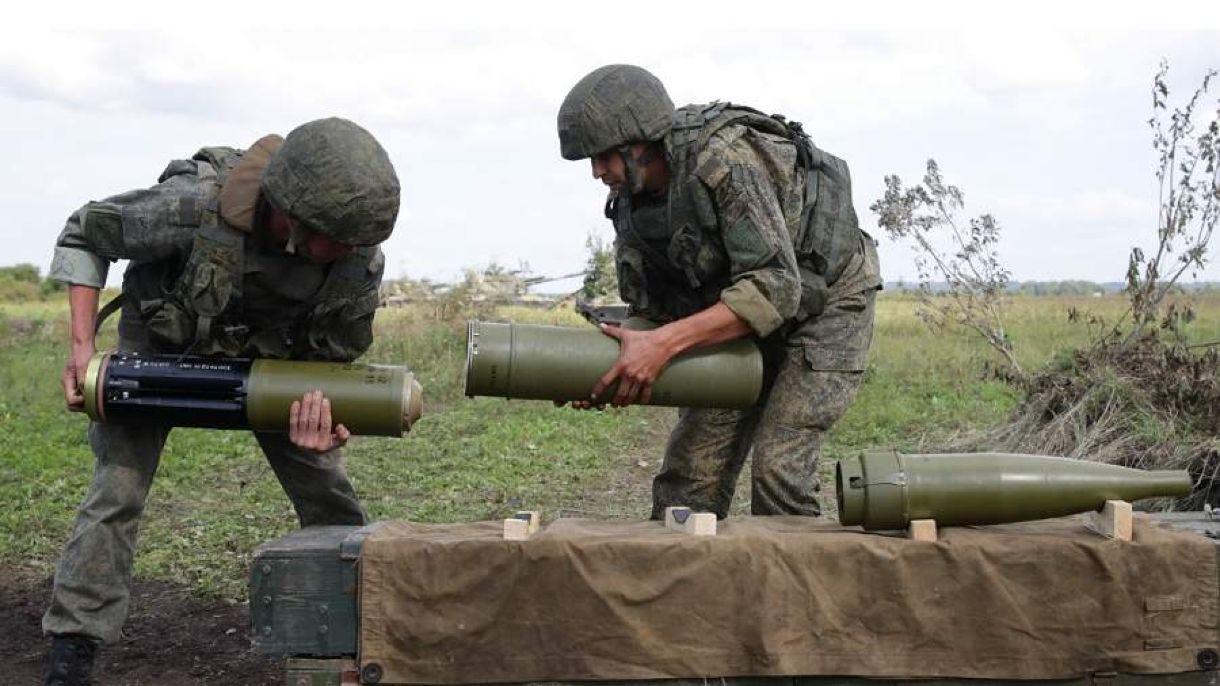A recent UK intelligence update claimed that Russia’s laser and satellite navigation-guided Krasnopol’s performance was hindered by weather. Low-altitude clouds prevented the artillery round from detecting a reflected laser energy beamed by a target-designator.
As Expensive As F-16, Large UAVs Like MQ-9 ‘Highly Vulnerable’ In Contested Airspace; India To Evolve Operational Roles
Russia’s defense industry has struggled to meet conventional ammunition production targets but has put in place measures to streamline and optimize the manufacturing of the 152-mm Krasnopol. The British Ministry of Defense (MoD) reported these intelligence inputs based on periodic analyses of battlefield trends in the Russia-Ukraine war.
The forthcoming extreme winter might still decide the effectiveness of any countermeasures and technical tweaks Russia might employ to improve the round’s performance.
The UK MoD posted on X (formerly Twitter) that Russia announced an increase in laser-guided Krasnopol-M2 production and “improved its poor weather performance.”
It also acknowledged that Russian artillery has “achieved success” with the Krasnopol by accurately using it to “target individual Ukrainian vehicles,” its “defense industry has been failing to make enough conventional munitions.”
Laser Detector Can’t See Through Clouds
“Russia utilizes uncrewed aerial vehicles to designate targets for Krasnopol by shining a laser beam on the target. However, low cloud has been the key limiting factor in the round’s performance because its laser detector does not have time to spot the laser energy and maneuver for striking,” the UK MoD said. Low clouds like stratus, stratocumulus, and cumulus are found at up to 2,000 meters (6,500 feet).

This will now spur Russian industry to “improve” Krasnopol’s “flight performance and reduce” the round’s “laser detection time.” With winter around the corner, Russia’s access to improved precision munitions will likely be one of the critical factors in its operational performance in Ukraine.
Russia reports have indeed been claiming steady weapons production based on government publicity material and frequent visits of top officials and ministers to the missile, gun, drone, and tank factories. However, introducing a technical tweak for the ammunition round to beat the weather phenomenon might take time and would be a while until it finds its way into series production.
What Is Krasnopol?
Krasnopol is an adjustable artillery ammunition of 152-mm caliber, specifically designed to destroy targets in the first shot. It has a host of novelties like aerodynamic control surfaces, a homing head, a laser seeker, and gas propulsion at the bottom. The details and nature of the last feature are, however, unclear, but likely nevertheless. A ‘base bleed’ system could expel gas in the low-pressure area behind the shell to reduce base drag.
These features aid in minimizing the usage of a large amount of artillery ammunition to get a hit on a target. Naturally functioning in a top attack mode like many Anti-Tank Guided Missiles (ATGM), the round aligns with the established practice of using artillery in anti-armor roles.
Artillery units carrying less ammunition also have resultant logistical and transport benefits, primarily less vulnerability to enemy fire on supply lines. The aerodynamic rudders assist in changing directions (or perform ‘corrections’) mid-flight in the final flight leg of its trajectory, guided by a laser marker on the target. The claimed gas-based thruster and aerodynamic surfaces maintain a range of 20 kilometers.
The UK claimed that #Russia's laser and satellite navigation-guided #Krasnopol's performance was hindered by weather. Low-altitude clouds prevented the artillery round from detecting a reflected laser energy beamed by a target-designator. #UkraineRussiaWar pic.twitter.com/9h2o0ogniW
— EurAsian Times (@THEEURASIATIMES) November 22, 2023
The main advantage of the projectile is the presence of a homing head and the consequent ability to aim at an illuminated target with minimal deviation. This increases the likelihood of the target being hit by the first shot, regardless of the range.
Unlike many satellite-guided projectiles, Krasnopol can hit moving targets. Stationary targets have an 85% to 95% probability of being hit, while there is a 70% success hit likelihood of striking a moving target up to 30 kilometers an hour.
Last Used
RuMoD’s publicity material on employing the Krasnopol round has been infrequent. A spectacular action on June 27, however, saw a remarkable strike that used Russia’s Sirius (or Inohodets) Medium/High-Altitude Long-Endurance (MALE/HALE)-class combat drone – featured in this previous EurAsian Times piece – to destroy a Ukrainian ammunition depot.
It cued the laser-guided Krasnopol round, with a thermal image from the UAV’s electro-optical system showing the explosion on the ground.
The RuMoD reported the last Krasnopol strike on October 16, when the round hit Ukraine’s Polish-made KRAB self-propelled guns (SPG). The round hit a vehicle hidden in a deeply wooded area abutting an open field. The SPG, however, did not explode immediately and bellowed white and black smoke before it caught fire. An overhead UAV eventually captured a massive sideways explosion.
- The author can be reached at satamp@gmail.com
- Follow EurAsian Times on Google News




